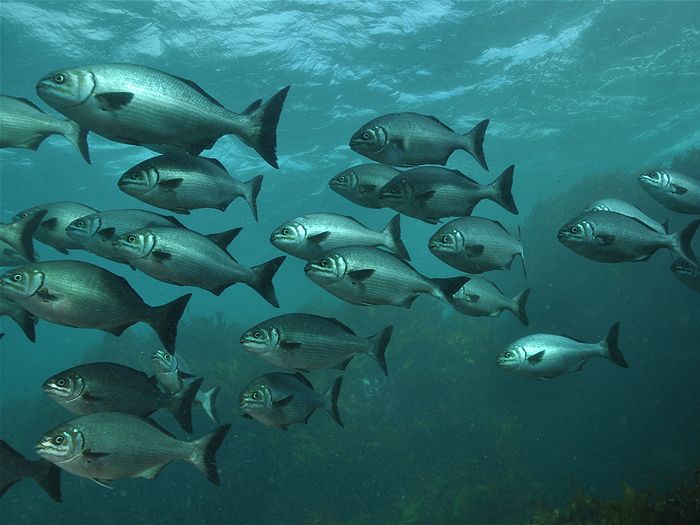Rivers are the lifelines of freshwater ecosystems, serving as migration highways for countless fish species. Understanding how fish move through these systems is critical for conservation, fisheries management, and ecological research. That’s where fish tags come into play. These small yet powerful tools allow scientists to monitor movement, behavior, and habitat preferences of aquatic species with unprecedented accuracy.
In this article, we’ll dive deep into how fish tagging technology helps uncover the mysteries of fish migration in rivers, the different types of tags used, how the data is collected, and why this knowledge is essential for sustainable fisheries.
Why Fish Migration Matters
Migration is vital for many fish species. For example, salmon and steelhead travel from the ocean to their freshwater birthplaces to spawn. Similarly, other species migrate seasonally in search of food, shelter, or breeding grounds.
Changes in river flow, construction of dams, pollution, and climate change can all impact these migratory routes. Without a clear understanding of how fish use river systems, it becomes difficult to manage these habitats effectively. This is where the use of fish tags provides critical insight.
How Fish Tags Work
Fish tagging is a method of attaching or implanting a tracking device into or onto a fish to monitor its movement. Tags can vary in size, shape, and technology. Some of the most common types include:
1. Passive Integrated Transponder (PIT) Tags
PIT tags are tiny electronic tags implanted under the skin of a fish. When the fish swims past a reader (usually installed in fish ladders or riverbanks), the tag is activated and its unique ID is logged. These are widely used for long-term tracking with minimal impact on fish.
2. Acoustic Tags
These transmit sound signals picked up by underwater receivers placed throughout the river. Acoustic tagging is ideal for real-time movement tracking over larger distances.
3. Radio Tags
These are similar to acoustic tags but transmit via radio waves. They’re often used in freshwater systems where saltwater interference isn’t an issue.
4. Satellite Tags
Though more commonly used for marine species, satellite tags are occasionally used for large freshwater fish. These tags provide extensive migration data but are generally too bulky for small river species.
Deployment and Data Collection
Fish are usually tagged during field surveys. Once a fish is caught, researchers record baseline data (length, weight, species) and then surgically implant or externally attach the tag. After a short recovery period, the fish is released back into the wild.
Data is collected via fixed receivers in rivers or mobile tracking units like boats equipped with antennae. This data reveals information about:
- Migration start and end times
- Route selection
- Travel speed and delays
- Habitat preferences
- Survival rates
For example, a 10-year study on the Columbia River Basin in the U.S. used PIT tags to track over 2 million salmon. Researchers discovered that juvenile salmon took longer to pass through dammed segments of the river, leading to higher mortality rates. These findings influenced dam management strategies and led to modifications that improved fish survival.
Applications in River Ecosystem Management
The insights gained from using fish tags can directly impact how rivers are managed:
1. Improving Fish Passage at Dams
By understanding where fish get delayed or turned around, engineers can design better fish ladders or bypass systems.
2. Evaluating Habitat Restoration Efforts
Tagging helps determine whether fish are using newly restored habitats, which informs future conservation investments.
3. Tracking Invasive Species
Tags can also be used to monitor the spread of invasive fish and assess their impact on native populations.
4. Informing Fishing Regulations
Tag data helps fisheries managers determine migration windows, spawning times, and population health—all of which shape fishing seasons and quotas.
Case Study: Mekong River, Southeast Asia
The Mekong River is one of the most biologically diverse rivers in the world, supporting over 850 fish species. Hydropower development has disrupted traditional migration routes for species like the giant catfish. A collaborative project by WWF and local governments used acoustic fish tags to track fish movement in key tributaries. The data showed that some fish were able to adapt to new routes, but others were severely impacted.
This led to a pause in the construction of certain dams and a push for fish-friendly infrastructure. The case highlights how fish tags can be a game-changer in protecting biodiversity.
Challenges and Limitations
While fish tagging offers invaluable data, it’s not without its challenges:
- Cost: Acoustic and satellite tags can be expensive, limiting large-scale deployment.
- Size: Smaller species cannot be tagged with larger devices.
- Data Gaps: Tags require functioning receivers; without them, data can be lost.
- Ethical Considerations: Proper tagging methods must be followed to minimize stress or harm to the fish.
Despite these limitations, advances in technology are making tags smaller, cheaper, and more reliable.
The Future of Fish Tagging
Emerging technologies such as biologgers (which measure physiological data), AI-powered data analysis, and drone-assisted receivers are enhancing the scope and accuracy of fish migration studies.
Imagine combining fish tag data with satellite imagery and water quality sensors to build a real-time dashboard of river health. That’s not a far-off dream—it’s already happening in pilot programs across Europe and North America.
Final Thoughts
Understanding fish migration is essential for preserving the health of our river ecosystems. Thanks to innovations in tracking technology, particularly fish tags, scientists and conservationists now have a clearer picture of how fish navigate these complex habitats. Whether it’s safeguarding an endangered species or enhancing sustainable fishing practices, the data from tagging projects is invaluable.
As climate change and human development continue to reshape our waterways, these tiny tags could hold the key to keeping rivers teeming with life for generations to come.






